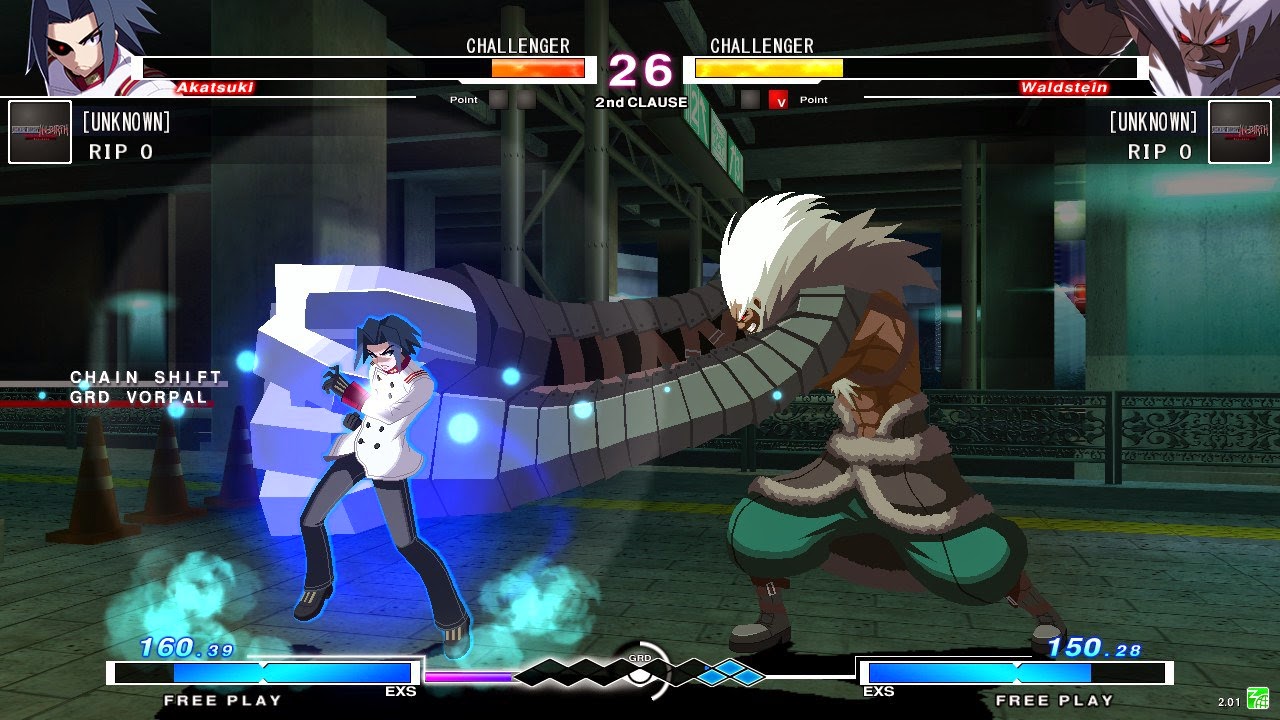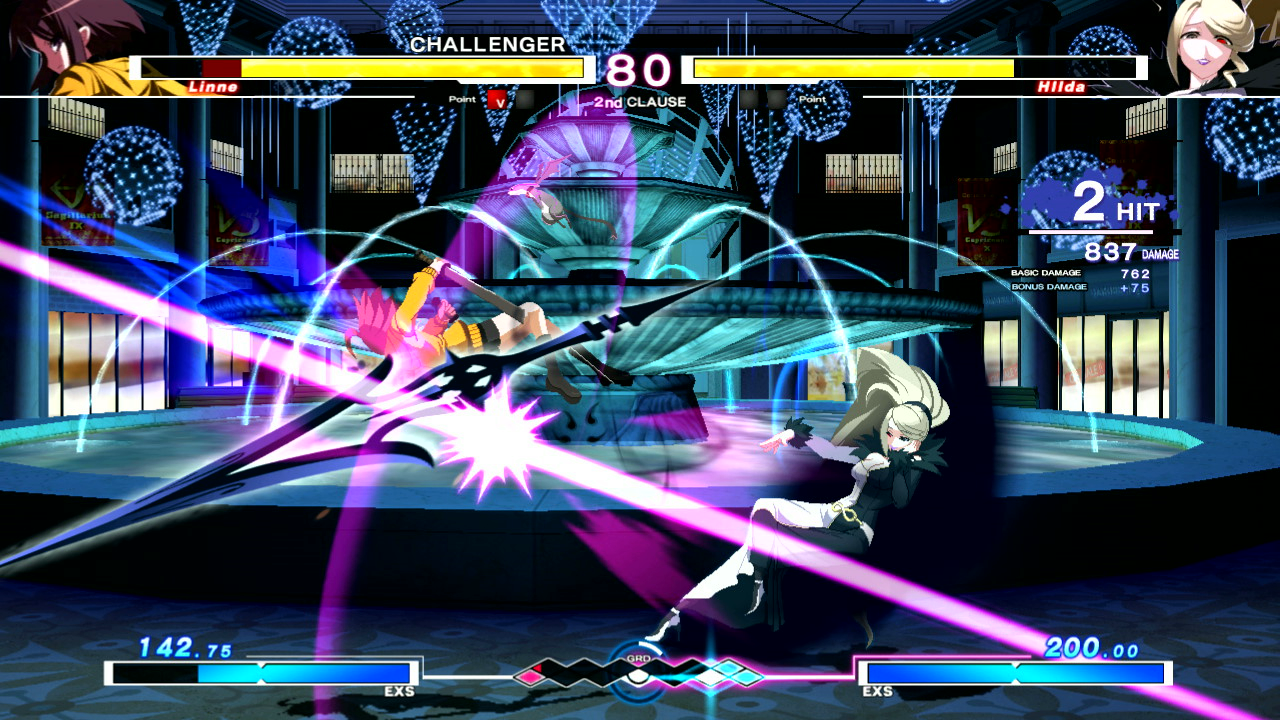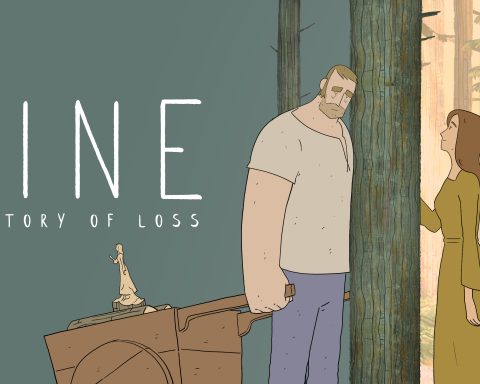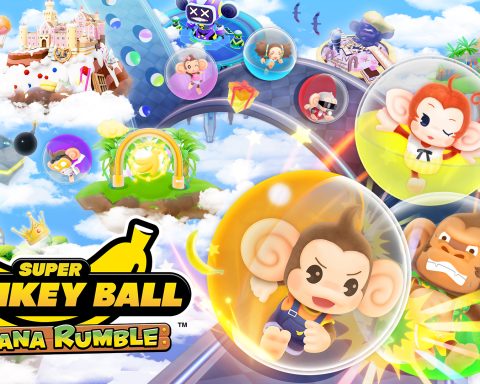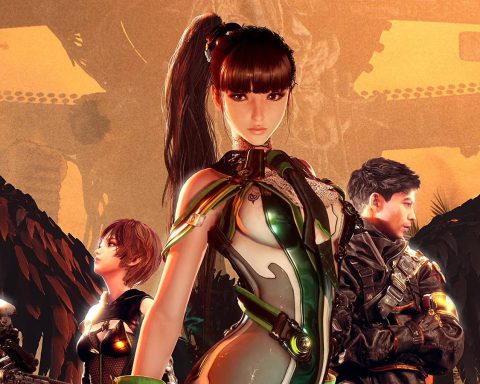Under Night In-Birth Exe:Late hurts my hands to play, and I’m not entirely sure it’s worth it. The latest 2D brawler from French Bread and Arc System Works is fast, furious, and complex to a fault, and whether that is a good thing depends greatly on just how many of these games you can play.
What draws me to fighting games is typically the stuff around the combat that gives it context. The fighting games I become most engaged with are those that either have an interesting plot behind them (Arc System Work’s BlazBlue, for example), a sense of humour (Dead or Alive 5), or are extensions of other franchises that I love (Persona 4 Arena). Under Night’s first problem is that it has none of this to fall on. The narrative is threadbare and told though a disjointed series of cut scenes that take place between certain battles in the arcade mode. If you complete the game with each of the characters you’ll patch together an understanding that a rift has opened and demons are spilling into the world, and each of the characters is either fighting to stop it, or fighting so that they can exploit it to their own ends. But at no stage will you sit back and think to yourself that you’re witnessing a narrative that had effort put into it.
We’ve seen fighting games work harder and harder to provide at least some kind of cohesive narrative behind them – BlazBlue itself, but also the likes of Injustice: Gods Among Us and even the new direction that Mortal Kombat are trying hard to push boundaries and offer a greater context for the action than “everyone is beating everyone else up”. As such, I’m finding it increasingly difficult to reconcile with fighting games whose concept of a narrative is what its arcade mode offers. For without proper story telling I find it harder to appreciate the characterisation, and through all my time with Under Night I’ve never quite developed a favourite character or characters.
Where Under Night shines, however, is in the combat itself, and for the fighting game purist, there’s a lot to like about the complexity on offer. In addition to a fairly standard combo system that requires intricate timing of button presses a sequential flow to attacks that is invigorating to execute, there’s a gauge at the bottom of the screen called “GRD” that rewards additional strength and abilities every 17 seconds to the player that has been most successful in building it up. Aggressively moving towards the opponent and landing attacks will build it up, and while blocking opponent’s attacks will also build it up, any other defensive action (such as moving away from the opponent) will decrease it. It’s not impossible to beat an opponent who has this GRD advantage over you, but it becomes more difficult, and if you lose out in the first 17 seconds you’re going to absolutely need to change the situation over the next 17.
As a result of this system Under Night becomes an aggressive and momentum-based fighting game, which can be frustrating to the person on the receiving end of the momentum. This frustration also flows through to the flow of attacks, with the standard 2D brawler issue of being unable to escape a really long combo once it starts coming in to play here, Venture online and play against someone better than you and you’ll especially notice that you spend a lot of time simply waiting for his/ her attacks to play through, and having just come from Dead or Alive 5: Last Round, where there is almost always an ‘out’ to an attack sequence, it’s hard to shake the feeling that Under Night is a deliberately retro fighter that genre fans will love, but newcomers will be overwhelmed with.
People will point to BlazBlue and say that it’s much the same experience, and yet I love that franchise. This is true enough – in fact, if anything the BlazBlue games are even faster and have an complex aerial metagame that makes it even less accessible than Under Night, but that’s where the narrative comes in. By the time I’d worked through what amounts to an entire anime season in following the plot, I was comfortable with the inner workings of BlazBlue. Under Night instead throws players into the deep end, and the only real way to learn how to play is to stick the difficulty level very low and spend a lot of time stumbling through combos in the training mode. It’s a less invigorating experience, to say the least.
Still, once you’re on top of Under Night’s combo system there’s a lot of game to enjoy. In addition to the Arcade mode there’s all the standard Survival and Time Attack modes, and the online play, which is threadbare in presentation, features some of the best netcode I’ve seen in a fighting game yet. For a game of this style, if there’s even one frame of lag you’re going to want to throw your controller at the TV because it’ll probably mean a loss, so credit to the developers for fighting out how to ensure there isn’t even one frame of lag. Unfortunately, because of the niche nature of this kind of game, the matchmaking means you’re going to come across some truly nasty matches at times. My first match online was against someone with 50-something wins and a win percentage of over 90 per cent. You can imagine how that went and it wasn’t a pleasant introduction. Even with practice against AI opponents, nothing will prepare you for the online competitiveness of a title like this except for hard practice.
Under Night is a pleasant enough game on the eyes, though again without the context of a narrative it’s hard to care too much about what’s going on. It was nice to see that the female characters in the game were all largely free of fan service, which is a nice change from the norm for the genre. Lacking the aerial combat of BlazBlue it’s doesn’t quite have the same dynamic feast for the eyes with its combo system, but each character has a range of supremely well animated ranged and melee attacks that do give them a different feel in battle. You might not have a favourite character by the end of Under Night’s brutal initiation, but you’ll likely have a default main character because you’re most effective with him/ her.
With all the complaints I’ve listed above, you’re going to know instantly whether Under Night is worth your time. For the seasoned fighting game veteran, none of the above applies to you, and you’ll probably appreciate the dramatic way the GRD system alters the flow of combat. For the newcomer to the genre, the lack of a coherent story mode, likable characters, and the complete absence of a learning curve mean that at best this game will be best left to the hardcore.
And whether it’s a game that the hardcore will enjoy over the long term depends entirely on how much of a community springs up around that well-designed, but limited, online multiplayer.
– Matt S.
Editor-in-Chief
Find me on Twitter: @digitallydownld

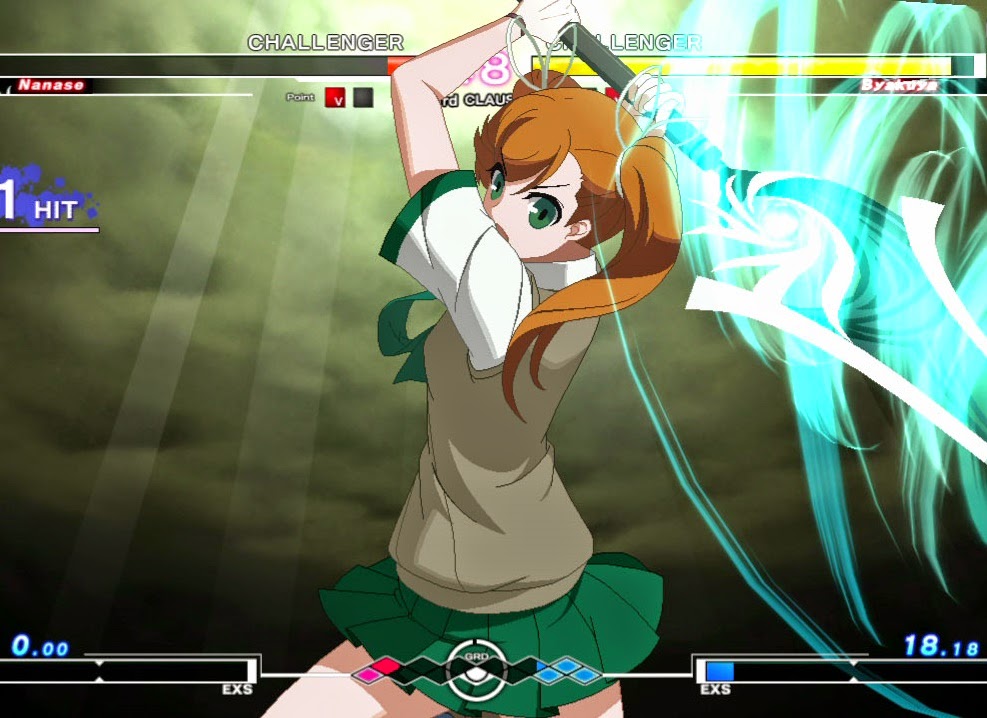.jpg)

